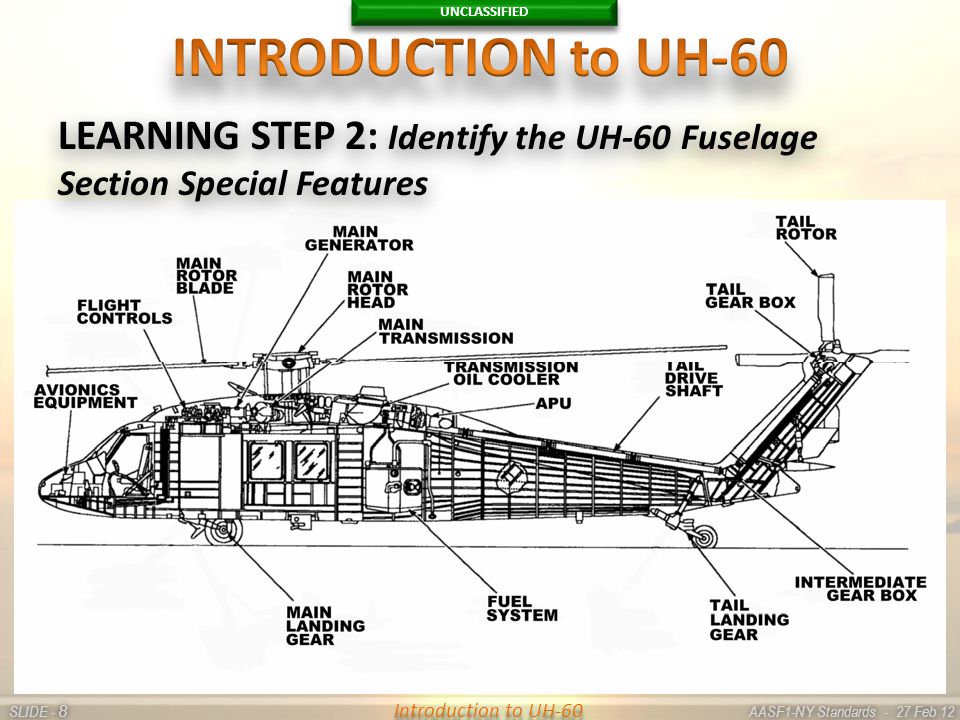All About Uh-60
Wiki Article
Top Guidelines Of Uh-60
Table of ContentsSome Known Questions About Uh-60.Not known Incorrect Statements About Uh-60 Not known Details About Uh-60 Uh-60 - An Overview
helicopter parts The majority of helicopters the engine turns a shaft that connects to an input quill on the transmission; the primary rotor pole comes right out of the top of the transmission and also the tail blades driveshaft attaches to an output quill 90 degrees out from the mast. Spinning the blades which has an aero aluminum foil area creates lift, enabling the helicopter to climb vertically or float.There are several terms related to rotary wing flight and it is very important for a student to end up being accustomed to them to understand the mechanics of rotary wing trip. The primary blades blade executes the very same feature as an aircraft's wings, supplying lift as the blades revolve lift being just one of the critical wind resistant pressures that maintains aircraft aloft.

Equally as it carries out in an automobile, a helicopter's transmission transfers power from the engine to the primary as well as tail blades. The transmission's major gearbox actions down the rate of the primary rotor so it doesn't turn as quickly as the engine shaft. A 2nd gearbox does the same for the tail rotor, although the tail rotor, being a lot smaller sized, can turn faster than the main blades.
See This Report on Uh-60
Early helicopters relied on reciprocating gas engines, however contemporary helicopters use gas generator engines like those found in business airliners. uh-60. 1. Origin: The inner end of the blade where the rotors link to the blade grips. 2. Blade Grips: Large attaching points where the rotor blade links to the center.Doing this raises or reduces the lift that the major rotor products to the car, enabling the helicopter to obtain or lose elevation. 2. Under the instructions of the cyclic control, the swash plate setting up can transform the angle of the blades separately as they revolve. This permits the helicopter to relocate in any direction around a 360-degree circle, including onward, in reverse, left and.
Helicopters call for an entirely various method of control than planes and also are much harder to understand. Traveling a helicopter calls for continuous concentration by the pilot as well as a near-continuous circulation of minute control modifications. A standard helicopter has its main rotor above the fuselage, just aft of the cabin location, containing 2 or more rotor blades extending out from a main rotor head, or hub, setting up.
This swashplate contains one non-revolving disc as well as one revolving disc installed straight on the top. The swashplate is attached to the cockpit control stick and also bar and also can be made to turn in any type of direction, according to the cyclic stick activity made by the pilot, or relocated up and down according to the collective bar motion.
The 9-Second Trick For Uh-60
The quantity of my sources lift produced is determined by the pitch angle (and rate) of each blades blade as it moves with the air. Pitch angle is called the Angle of Assault when the rotors remain in activity. This pitch angle of the blades is regulated in 2 methods jointly and also cyclically.
Since all blades are altering pitch together, or 'collectively', the change in lift stays consistent throughout every full rotation of the blades. As a result, there is no tendency for the helicopter to change its existing instructions various other than directly or down. The pictures listed below show the result of elevating the cumulative lever on the swashplate as well as rotor blades.
Obviously, actual rotor head systems are even more difficult than this photo reveals, however the basics are the same. The cyclic control is made by relocating the control stick that rises from the cabin floor between the pilot's legs, as well as can be relocated all directions aside from up and also down.
The Buzz on Uh-60

The images below show the result of this cyclic control on the swashplate and rotor blades. As the swashplate is slanted, the opposing rods relocate opposite instructions. The placement of the rods as well as for this reason the pitch of the individual blades is various at any kind of provided point of turning, hence producing various quantities of lift around the blades disc.
go to the website
As the stick is leaned over in any kind of instructions, so the angle of home plate modifications very somewhat. uh-60. This adjustment of angle matches directly to what is taking place to the rotor disc at the same time i. e. the side of home plate that is greater stands for the side of the rotor disc generating even more lift.
This tail blades is made use of to control the yaw, or rotation, of the helicopter (i. e. which way the nose is directing) as well as to discuss this we first need to recognize torque. Torque is an all-natural force brought on by any transforming item and in a helicopter it is triggered by the engine turning the main rotor blades; when the blades are rotating after that the all-natural response to that is for the fuselage of the helicopter to start rotating in the opposite direction to the blades.
Report this wiki page